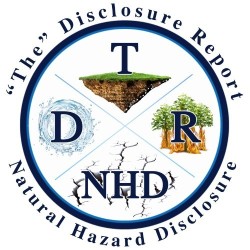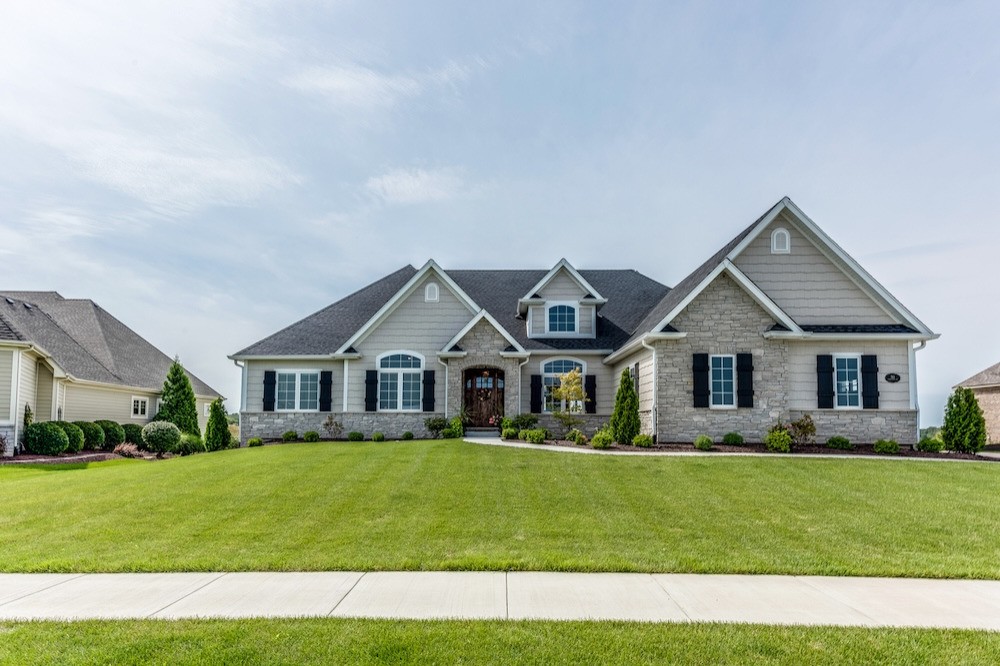One of the most effective ways to protect a property from wildfire risks is by creating a defensible space around the home. This strategy involves clearing flammable vegetation and creating a safe zone that reduces the likelihood of fire spreading to the house. Both AB 38 and SB 63 require homeowners in fire-prone areas to maintain defensible space zones.
The defensible space is typically divided into two zones:
- Zone 1 (0-30 feet from the home): This is the area immediately surrounding the home, and it should be free of all dead plants, grass, weeds, and any other flammable debris. Keeping this zone clear is critical to preventing fire from reaching the structure.
- Zone 2 (30-100 feet from the home): This zone extends further out and requires thinning of trees and shrubs to minimize the spread of fire. It also involves maintaining appropriate distances between trees and bushes to prevent fire from jumping from one area to another.
TDR NHD can help Realtors and buyers understand the requirements for defensible space in the areas they are considering, ensuring compliance with fire safety codes and improving overall property safety.
Fire Safety Measures for Home Buyers
Beyond creating defensible space, there are several fire safety measures buyers should ensure are in place before purchasing a home in a fire hazard zone.
- Fire-Resistant Building Materials: Homes in wildfire-prone areas should be constructed with fire-resistant materials such as Class A roofing, non-combustible siding, and tempered glass windows. These materials are designed to withstand high heat and flames, making them essential for properties in fire severity zones.
- Dual-Pane Windows: Installing dual-pane windows with tempered glass can significantly increase the home’s fire resistance. Dual-pane windows reduce the likelihood of the glass shattering due to extreme heat, thereby preventing embers from entering the home.
- Adequate Clearance Around the Property: Maintaining a clear area around the home is crucial for fire safety. In addition to defensible space, homeowners should ensure that there is no overhanging tree canopy, dry vegetation, or flammable debris near the home.
By following these fire safety measures, buyers can reduce the risk of wildfire damage and ensure their new home is prepared for potential fire hazards.
Insurance Considerations for Homes in Fire-Prone Areas
In areas classified as very high or high fire hazard severity zones, insurance is a critical consideration. Standard homeowner’s insurance policies may not provide sufficient coverage for properties in these zones, meaning buyers will need to explore additional fire insurance options.
Homes located in wildfire-prone areas often require coverage through the California FAIR Plan, a program designed to provide insurance for homes that are otherwise difficult to insure. Realtors can help their clients navigate these insurance considerations, ensuring they are prepared for any additional costs that may arise from living in a fire hazard zone
With the detailed information in TDR NHD reports, agents can educate clients about insurance requirements and help them prepare for the financial aspects of purchasing a home in a high-risk area.
FAQs About Fire Hazard Zones and Real Estate
- What is the significance of a fire severity zone in real estate?
Fire severity zones determine the level of wildfire risk associated with a property. Knowing a property's classification (Very High, High, or Moderate) helps buyers assess the safety precautions needed and the potential insurance costs.
- How does defensible space protect a property from wildfires?
Defensible space reduces the likelihood of wildfire spreading to a home by creating a buffer zone that is free of flammable vegetation and debris. This space helps slow down or stop the spread of fire.
- What are AB 38 and SB 63, and how do they impact homeowners in fire hazard zones?
AB 38 and SB 63 are California regulations that require homeowners to maintain defensible space around their homes in fire hazard zones. They also mandate disclosure of fire risks during real estate transactions.
- Do homes in fire hazard zones require special insurance?
Yes, homes in fire-prone areas often require additional fire insurance coverage. Buyers may need to obtain insurance through the California FAIR Plan if standard policies don’t offer sufficient coverage.
Are you a real estate agent or homebuyer seeking more information on fire hazard zones? Are you looking for assistance or to order a comprehensive NHD report?
If so, contact TDR NHD today. Our team offers full support and service to Realtors, ensuring your clients have the critical information they need to make informed and confident real estate decisions. We’ll be your trusted partner in navigating real estate fire risks.

